Blood and Sun
2020-07-08
by Niklas Göransson
Broken bridges and mended minds lie along the wanderer’s road – Blood and Sun is a dark folk project masterminded by American musician and artist Luke Tromiczak.
– “Love & Ashes” is the culmination of about six years of song-writing. The debut, “White Storms Fall”, was ruminations on coming of age in Minnesota – a place known for its harsh winters and landlocked bodies of water. It was about burying friends, sitting out under the stars in farmlands, collapsed bridges, failed romances, and visions of forming a worthwhile life. “Love & Ashes”, on the other hand, is more of a travelogue. As the album mixing and mastering wrapped up after nearly two years of work, I had to find a label. Pesanta had folded and a Belgian label I was hoping to work with was having issues at the time and had to pass on the release. I showed the masters to a few close friends and was recommended to Nordvis. Andreas has been great to work with, both in his straight-shooting and no bullshit attitude. We’ve also gotten along well, talking about music and living with spirited purpose in rural settings.
The second BLOOD AND SUN album, “Love & Ashes”, was released by Nordvis in February 2020, six years after its predecessor
– The material was written in various places and then recorded all across the country. Some of the events taking place during that time were strange: broken hearts stealing a kiss in a burning building, waking up to feeling an uncanny presence after the death of a friend, the symbolic world presenting itself through mundane events, as well as finding and cultivating love though an improbable meeting of kindred spirits. Some songs are charms, others are curses. It differs musically from the debut – its influences are wider. Some tracks were built up first from guitars and percussion and then by adding various elements. The piece is then arranged, rather than rehearsed as a band. I used a more varied approach to my song-writing and playing, I was also able to tap a wide group of people to contribute to the album.
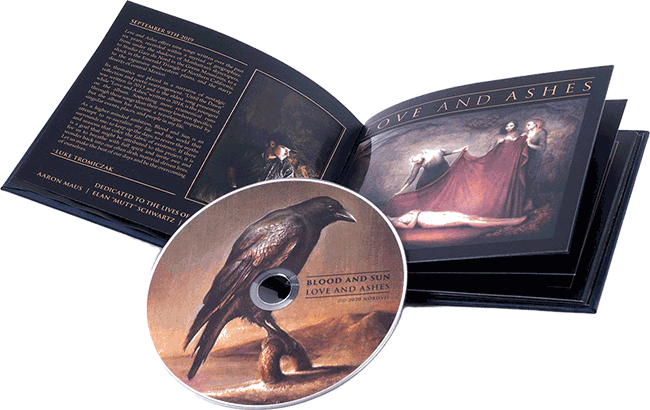
“Love & Ashes” was engineered by Robert Ferbrache, an American producer and musician boasting a resume that would’ve been highly valuable to such a recording project. Over his almost four-decade-long career, Ferbrache has worked with a wide range of both American folk and neo-folk bands – from 16 HORSEPOWER and WOVENHAND to NON and BLOOD AXIS further on to IN GOWAN RING and CHANGES. Besides engineering expertise, he also made his considerable collection of string instruments available.
– I own a twelve-string Taylor, a Gibson SG, and a Morgan Monroe acoustic bass; that’s really the extent of what I’ve been able to collect thus far, since I’ve been moving from place to place over the years. I’m hoping to acquire a mandocello – an eight-string instrument in the same register as the cello but that’s played like a guitar. Bob has a collection of vintage guitars, a custom-built mandolin, banjos, etcetera, and many of them were put to good use in providing varied colour and tonality to the album. Featured on many of the songs is a battered ’56 Gibson six-string acoustic, which was a dream to play. He also took the time to show me many of his mad album-making methods and even let me engineer a bit of the recording. These techniques have transferred nicely to new demo material and I’m excited to collaborate with Bob again.
The two first met when Luke flew out to mix “White Storms Fall” with Ferbrache and Adam Toruella, the owner of BLOOD AND SUN’s previous label, Pesanta Urfolk.
– Adam wanted to catch up with a few friends he was releasing records with at the time and who had land outside of Boulder, Colorado. Bob‘s home of Westminster, Colorado – called Absinthe Studios – was close by and made for a perfect place between Minnesota and the San Francisco Bay to meet up with Adam. Bob and I hit it off pretty well over that weekend and he did a fantastic job of mixing the record. We also had the pleasure of drinking absinthe and whisky with him until the early-morning hours, listening to five-point surround mixes of 16 HORSEPOWER, WOVENHAND, and BLOOD AXIS. A few years later, Bob retired Absinthe Studios and moved to New England. He approached me at a festival and said he wanted us to collaborate on the next BLOOD AND SUN album. We started with the skeletons of five songs in the summer of 2017 and continued again the following February. When I returned, I’d just quit drinking. Bob, who is a self-described 1950s-style alcoholic, had stocked the fridge with seltzer and a few gallons of his favourite cinnamon peppermint iced tea for me.
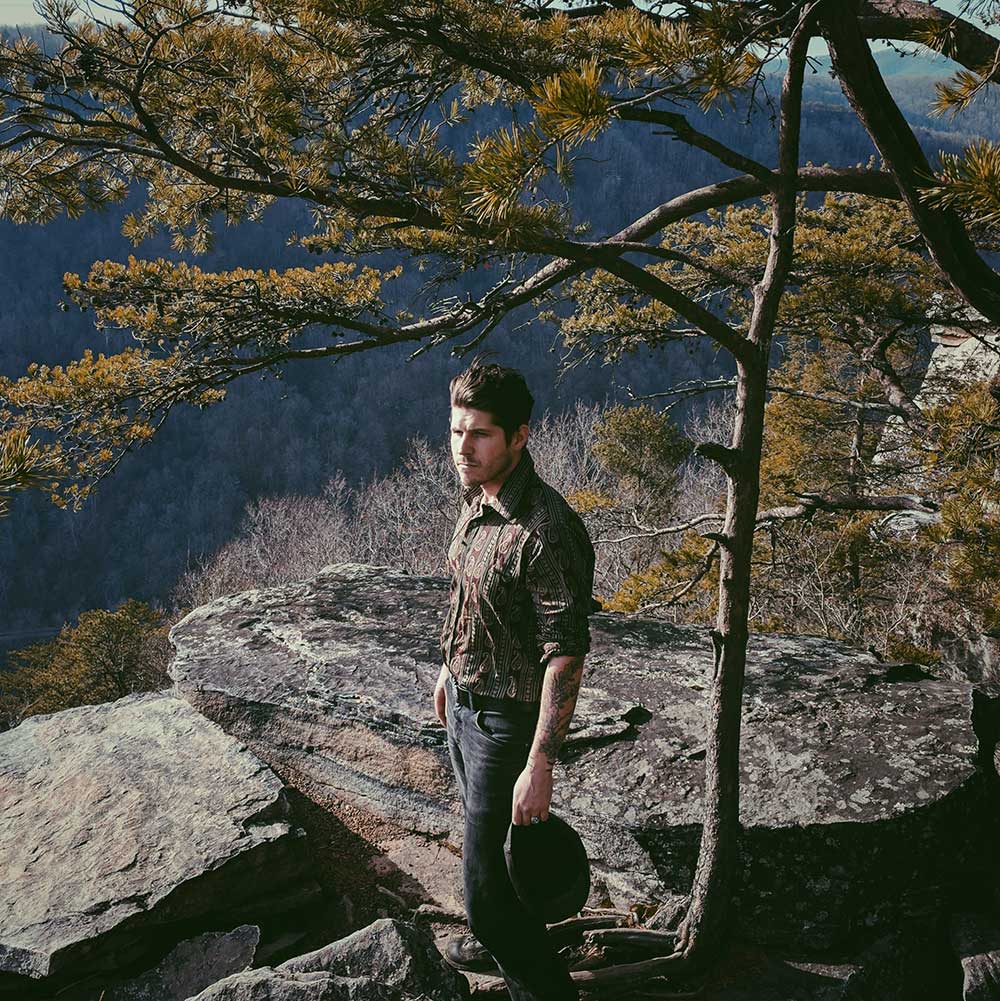
Is it primarily booze you’ve cut out, or any form of stimulant?
– Everything. My trouble with alcohol – and pretty much any other substance that passed through my hands – came slowly and over time. I’d been drinking ever since my early teens, with dry periods here and there. I began tending bars in my twenties and things just snowballed gradually from there. I didn’t realise how destructive my drinking had become; I was always narrowly avoiding one crisis after another. I could remain employed, I had many friends over the years, and at times I could maintain relationships to some degree of normalcy. But things started tallying up. I was drinking to sleep but could no longer sleep. I was drinking to be social but kept driving wedges between myself and those close to me. I was also not being the man I wanted to be, either for my loved ones or myself. Like many who decide to give up using substances, I came to a place I never want to be in again. So, I quit. I sought counsel in others who’d stopped, and I reached out to a few people to start the process of a better way of living.
Do you miss it?
– I have to say I enjoyed drinking. I also enjoyed smoking cigarettes and being in altered states, but I do not like habitually losing control, letting myself down, or being a liability to people who depend on me. It’s now been two-and-a-half years of accidentally living a straight-edge life and I’ve never been more content, healthy, or better rested in my life.
Before the interview, Luke mentioned in passing that he’d undergone delirium tremens, an acute psychosis associated with ethanol withdrawal. Alcohol blocks REM sleep, which is something the brain sorely needs. Meaning, passing out while drunk prevents the brain from entering the REM state. This is why many experience intense dreams the morning after a night of drinking; the brain has sobered up and now tries to compensate for the REM it usually gets during the first hours of sleep. Alcoholics with a high tolerance, on the other hand, often drink so much that they’re still intoxicated when they wake up, therefore getting none. After cessation of lengthy alcohol abuse – because the blockage is removed, I presume – the built-up REM pressure erupts and comes out as a torrential flood, all at once. This results in a state akin to a waking dream, a hybrid state of reality that’s been proven via brain wave recordings.
– I wasn’t trying to quit using yet when this happened. I was tired enough not to drink one night, following an entire weekend of Halloween partying, and I experienced Jacob’s Ladder-level hallucinations of winged serpents across the ceiling and creatures in the room with me. Fortunately, I immediately figured out what it was: ‘Oh, I forgot to drink. These are DTs.’ I’ve always experienced a few levels of sleeping phenomena as well: night terrors, moving, punching, talking in my sleep, etcetera. All of these produce a very strange liminal feeling. I’m with you though – bad trips can carry their own magic, and I’ve certainly sought to make use of these experiences. They are reflected in a few songs on the record.
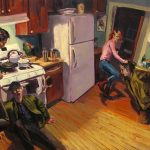
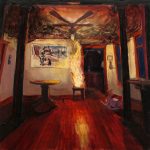
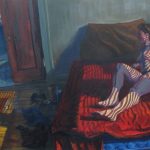
Luke is also a visual artist. I found his online portfolio and there is some seriously impressive work there. ‘I don’t know much about art, but I know what I like’, as a wise man said. It was therefore with some surprise I learned that he hasn’t painted in five years.
– I gave it up for a myriad of reasons. I just didn’t have the impulse to create more works at the time. I find the interaction of performing music and getting records into fans’ hands much more rewarding than trying to entice wealthy collectors to purchase my artwork; this relationship is not one I’m especially skilled at. BLOOD AND SUN brought me to Europe, it afforded me the ability to travel the States and see new places. I’ve been fortunate enough to meet many of my artistic heroes in both music and painting. The social aspects of the live performance and spending time with people of similar interests and passions is much more immediately enjoyable. But I will return to making serious paintings – I’ve started a little bit this past year but haven’t yet been fully consumed by it. It often seems as if it’s the craft sweeping me up, and sheer will falls just short in kindling the fires necessary to become entranced.
In a previous interview, you alluded to some kind of art-related academic controversy – what was that about?
– Thankfully, I never had to deal with any real academic controversy or scandal. I worked hard in my studies, and although I never gained accolades within the school setting, I did well with organising shows and getting my work sold from time to time. Also, during the time of writing “White Storms Fall”, I received a grant to make paintings in my home state. I made a six by twenty-four-foot triptych about a bridge collapse in the city. What I would’ve been referring to was my critique of the culture of pedagogy in art schools. The painting departments in many schools have, to paraphrase Vincent Desiderio, thrown the baby out and kept the conceptual bathwater. There was a deskilling that happened in the 60s, stemming from the rather neurotic notion that we’ll be doomed to perpetuate 20th century atrocities if we follow tradition. Power structures are too bound up in the image to be trusted. And, believe it or not, that lineage gets in the way of teaching simple foundational skills and techniques to students. I don’t look to the academic model of France for inspiration. After the French Revolution, this mode of artistic production served as moral allegory and state-wielded propaganda – as seen in Jacques-Louis David, all the action and message contained within the picture plane. This rather new approach would be implemented for ideological reinforcement in both Fascist and Communist regimes. I rather look to artists who follow the Venetian tendencies of Renaissance painting. This tradition favoured a rhythmic dynamism, colour, and alluded to a much wider world outside the picture plane.
Luke explains that the Venetian school is best exemplified by 16th century Italian painters like Titian and Tintoretto, and later built on with the Tenebrism of Caravaggio, Dutch painters Rembrandt and Bruegel the Elder, and French realists such as Courbet and Jules–Bastion Lepage.
– I take into account that, during the Cold War, the United States was actively touting itself as the new home of the avantgarde, progress, and freedom on the world stage. I think, in hindsight, there’s an undeniable propagandist bent to the elevation of the abstract expressionists – to the detriment of painters like Andrew Wyeth, or Edward Hopper, who had more popular support. Critical theory has also had a near-inseparable relationship with art over the past half-century. What tends to happen in these types of trends is that, first, a radical idea is generated, usually taking aims at strawmen, followed by dissemination within its disciples using in-group jargon before, finally, becoming the new dogma within institutions.
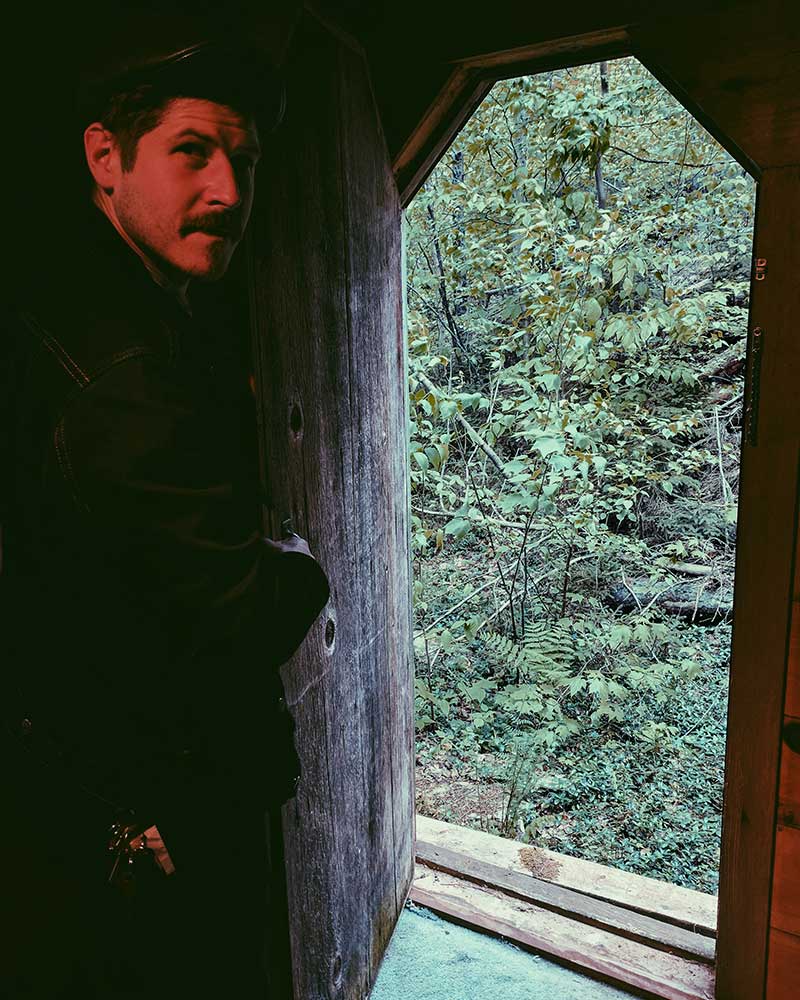
In a September 2019 conversation with Dan Capp of WOLCENSMEN, we discussed how much quality neo-folk and associated music is created by musicians with black metal backgrounds. “Kveldssanger” by ULVER, WARDRUNA, WINTERFYLLETH’s “The Hallowing of Heirdom”, FORNDOM, and so on. This, according to Dan, is no coincidence. ‘Neo-folk reaches for something deep and mystical in the same way most black metal does, and both musical styles are concerned with creating atmosphere and drama.’ He also pointed to this as a likely explanation as to why so many metalheads are into the likes of DEAD CAN DANCE and Diamanda Galás – due to that love of atmosphere and mysticism. As it happens, Luke used to have a black metal band called MALEDICERE.
– I think Dan might be right. It’s funny, I don’t know if you’ve ever read the old interviews with Alzbeth from the THE MOON LAY HIDDEN BENEATH A CLOUD but, being friends with the likes of ABIGOR, she was dreading the day when neo-folk and black metal would merge and create bastard children. Similar developments were certainly happening in the US around 2009, when black metal and noise were being co-opted and turned into some pretty milk-toast garbage. I try to keep the influence of one or the other at a minimum. I’m not always successful, and I think this exchange makes sense for an artist since both worlds are, at their best, spiritual endeavours. That said, black metal was and should be Satan: opposition to comfort, opposition to grace, opposition to how Christianity shaped the West and its arrogant colonial impulse. There should be a heavy dose of the Satan that Christianity engendered from twisted images stolen from the pagan world. It should be inconsolably dark and relentlessly unkind. But black metal should also engender the exuberance of spirit, acknowledging things that become more than the sum of their parts. Though brutally articulated, black metal extols existence of spirit, channels, riverbeds, and powers beyond material control. To the Christian, it should be a healthy dose of malignant hatred – something Christianity itself put to work in the shadows – from the dismembered parts of the old ways. To the secular materialist, it should be a slap in the face to their arrogance that the mundane is the only realm.
How do you think heathen folk music and black metal interact with or mirror each other?
– I think both deal with the spirit in ways the prevailing secular order does not. Operating within the framework I just described – as a weapon against presumed ideals, rather than exploring the wider breath of spiritual realities – is a short-sighted aim. It’s like going around trying to ‘own’ people for intellectual shortcomings rather than focusing energy on creating things more vital than the watered-down standard we experience. In this way, I’ve recently found myself less at odds with people who return to Christianity rather than dead-end materialism, which can certainly be seen in a few of my songs.
On a related note, Luke mentioned that he’d recently read a book about the Kindred of the Kibbo Kift – a British organisation founded in August 1920, focused on collective accountability, societal reconstruction, and spiritual renaissance. Photos of their gatherings look as if they come straight out of The Wicker Man; I’m actually a bit surprised I’d never heard of them before.
– There were many such cultural utopian projects taking shape in the interwar period. I am by no means an expert, or a follower of the organisation, but they’ve certainly been a hitching post for my imagination over the past few years. The Kibbo Kift was an enigmatic, short-lived co-ed woodcraft organisation that split from the Boy Scouts, led by the charismatic visionary John Hargrave. Their aim was physical health through woodcraft, the re-sacralisation of life through new rituals, meditation, arts, crafts, and mumming plays. In the wake of the Great War, the Kibbo Kift also acted as a movement towards international governance, as opposed to imperialism, and an anti-war platform bolstered through the study of world cultures and religions.
‘Kibbo kift’ is an archaic English expression for a demonstration of great strength. Upon returning from two years amongst the horrors of World War I, John Hargrave became disgusted with what he perceived as militaristic and nationalist tendencies in the Boy Scouts; he felt they were betraying their core ideals. Hargrave envisioned a community dedicated to moulding the modern human – mentally sound, physically robust, and artistically creative – who would constitute the core of a new society liberated from injustice and war. The Kibbo Kift retained the woodcraft principles and wildlife elements of the Scouts, and added a regimen of mental discipline, ambitious aesthetics, actual ritual, and utopian philosophy. In order to reinforce these sentiments, Hargrave drew heavily upon symbolism and visual expression meant to embed images into the participants’ psyches. Beside influences from various established religions, Hargrave designed their rituals after hermetic sources such as British magician Aleister Crowley. Kinsmen and kinswomen were also expected to craft their own clothes, ritual paraphernalia, and tents.
– As an active practitioner of paganism, I believe heathenism should be enriched with the pursuit of knowledge of the natural world, handicrafts, as well as comparative studies of other living spiritual traditions. I find the aesthetic invigoration of the individual crafting their own regalia, ritual items, etcetera to be an incredibly empowering pursuit that the Kindred was keen to cultivate in its members. As an artist, it’s evident that the artefacts and symbols left behind by any project speak louder than the shortcomings or mundane origin of its creator. I also find the Kibbo Kift‘s attempt to revitalise the pre-Christian myths and practices of the British Isles, whilst looking to other ancient cultures and contemporary animist and pantheist traditions, more than a worthy gesture.
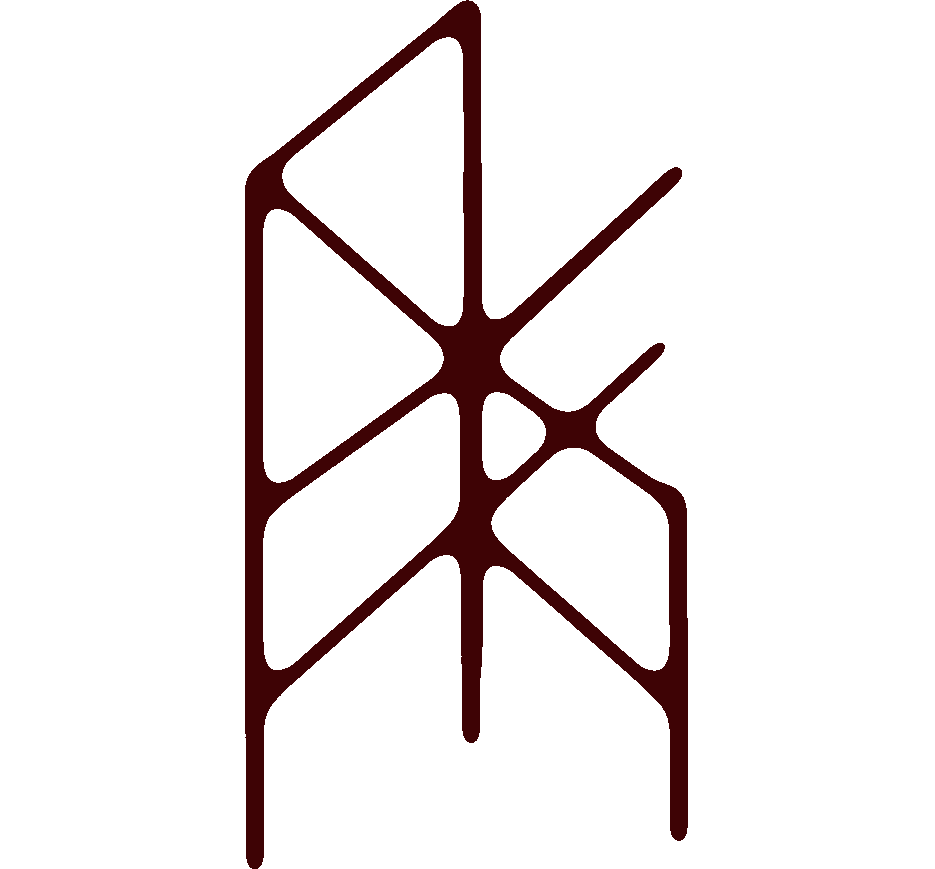
Many of the spiritual aspects of the Kibbo Kift were not so much theological creed as they were geared towards instilling a sense of wonder, community, and inspiration. Hargrave believed a healthy mind to require a ‘ritualistic exodus’ from city-dwelling. Spartan living and woodland pilgrimages were meant to harden the cadres of the future elite; to prepare them for active service in the battle for the global consciousness of tomorrow.
– Orientation towards a new resiliency, away from digital dependence and mechanised life, has to begin somewhere. I think these things should start small – not with the aim to scale up but to serve as an example for similar pursuits. There is more than one way to skin a cat, as the saying goes, and having multiple approaches to universal questions and problems makes the human project more resilient. Perhaps higher ideals of health and purpose applied through diverse and localised approaches might yield good results. I’m intrigued by any organisation outlasting the few days of festivals we’re accustomed to in our little subcultures, which encompasses more than a just a consumer relationship and one that builds tangible skills and offers rites of passage to youth. I think there are healthy examples of just those kinds of outcomes present in the short-lived Kindred of the Kibbo Kift.
After the stock market crash of 1929 – precursor to the Great Depression in both the US and Europe – the playing field in the arena of ideas changed drastically. Hargrave studied the developments and concluded than harsher days call for harder measures. Outback hiking became marching in the cities; archaic garment and esoteric terminology were abandoned in favour of uniforms and slogans. The movement would become known as the Green Shirts, and took to the streets to do battle with idealists wearing different coloured garments; as such, they would clash with both Blackshirts of the British Union of Fascists and their crimson counterparts from the Communist Party of Great Britain
– Out of a cynical realism: anyone who says they hold a universal answer should be held suspect. I think people naturally tend to form bonds on a familial, tribal, and regional level. As an aside, in the digital realms, this is preyed upon to an absurd degree by algorithmic creations of in-groups. But even that said, I think the Kibbo Kift’s aim was appreciation through mutual respect and cultivating stronger and more resilient universal values. This ideal was multi-faceted and glistening with different characteristics, given the specific light it reflected. We’ve recently been going through a strange period of uncertainty where some questions seem pressing in terms of what’s truly important in life. Is it really a good idea to be entirely reliant on supply chains from distant places? Is it wise to give up books in favour of digital catalogues of knowledge? Can one rely solely on the government or an employer to provide in times of distress? I hope the victory gardens and crude home gyms and physical regimens are phenomena that grow stronger out of these odd times. This in itself points to the power of the individual on the small scale.



